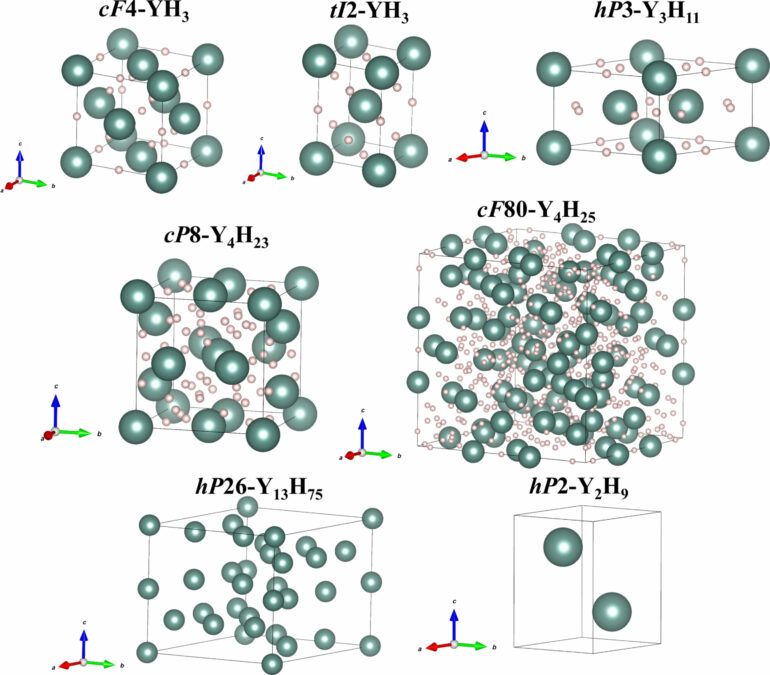Researchers at the University of Bayreuth have made a significant scientific breakthrough by identifying new yttrium-hydrogen compounds, a discovery that has serious implications for research on high-pressure superconductivity. High-pressure superconductivity refers to the property of materials to become superconducting, which means they conduct electrical current without resistance when exposed to certain pressure conditions. The study is published in Science Advances.
Several rare-earth superhydrides are known for being reported to be near-room-temperature superconductors at high pressures. Superconducting materials allow current to flow without any resistance. In most cases they are products of chemical reactions realized in diamond anvil cells at extreme pressures and temperatures.
Their phase and chemical compositions are often unknown, making claims of superconductivity not quite justified, as the measurable critical temperature (TC), which is the temperature below which the material’s electrical resistivity drops to zero, depends on many factors, including the phase purity of the sample and hydrogen content in hydrides. Therefore, the existence of near-room temperature high-pressure superconductors is still under scrutiny.
The use of the modern method of so-called synchrotron single-crystal X-ray diffraction from multiphase microcrystalline samples, developed in the group of Prof. Natalia Dubrovinskaia and Prof. Leonid Dubrovinsky at the University of Bayreuth, enabled the unraveling of the chemical complexity and richness of the yttrium-hydrogen system under high-pressure high-temperature conditions.
At pressures up to about 170 GPa, Ph.D. student Alena Aslandukova and co-authors identified five novel yttrium hydrides with unique structures. These compounds were synthesized in diamond anvil cells through the laser heating of Y-H samples (yttrium with hydrogen-rich ammonia borane or paraffin oil) up to 3,500 K.
Single-crystal X-ray diffraction provides valuable insight into the arrangement of yttrium atoms in the crystal structures of these newly discovered phases. Hydrogen content was estimated using empirical relations and ab initio calculations that revealed the specific composition for each compound, pointing toward the richness of the Y-H system and diversity of yttrium hydrides under high-pressure conditions.
“The study emphasizes the complexity of the yttrium-hydrogen system and its multiphase character at high pressure,” explains Aslandukova. “The results make a significant contribution to our understanding of materials behavior at extreme conditions and the nature of potentially superconducting hydrides.”
More information:
Alena Aslandukova et al, Diverse high-pressure chemistry in Y-NH 3 BH 3 and Y–paraffin oil systems, Science Advances (2024). DOI: 10.1126/sciadv.adl5416
Provided by
Bayreuth University
Citation:
Researchers discover new yttrium-hydrogen compounds with implications for high-pressure superconductivity (2024, March 14)



